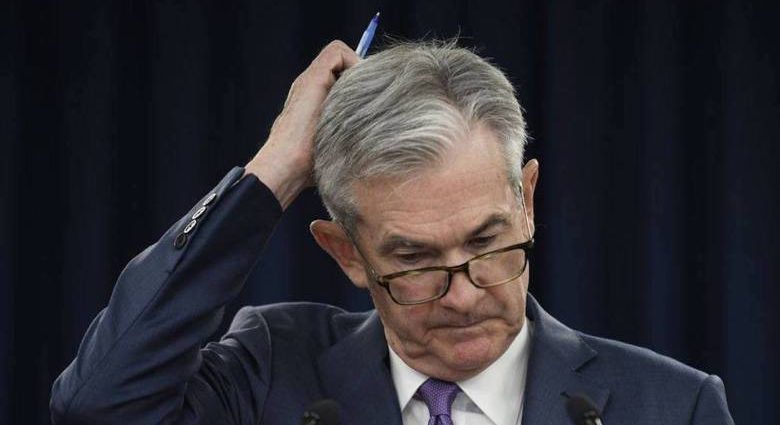NEW YORK – US bank regulators Sunday announced a massive response to last week’s run on Silicon Valley Bank (SVB) and the risk of copycat runs against other regional banks.
The Federal Reserve will provide one-year loans against banks’ security portfolios through a new Bank Term Funding Program, eliminating the risk that banks might be forced to sell their US$4.4 trillion in government securities at a loss.
The Federal Deposit Insurance Corporation (FDIC), meanwhile, will make whole all SVB depositors, as well as those of the Signature Bank of New York, closed by New York state authorities on “systemic risk” grounds.
Federal regulators have slapped a rather large bandage on a gaping wound that they cut into the banking system. By tightening credit to control a wave of inflation that had nothing to do with credit in the first place, the Treasury and Federal Reserve have created a credit problem where none existed before. There are few comparable instances of self-sabotage in the annals of bank regulation.
Although depositors won’t lose money, holders of bank bonds may take substantial losses. That augurs poorly for a recovery in credit markets already stressed by Federal Reserve tightening.
Sunday’s announcement will ease market fears that the run on SVB, which saw $45 billion in deposits leave the bank in little more than a day, might spread to other regional banks. The value of regional banks’ stocks collapsed on March 10 in response to the fear of a general run.

Unlike all previous periods of stress in the US banking system, the quality of bank assets isn’t an issue. During the Covid epidemic banks loaded up on the highest quality assets – bonds issued by the US Treasury and US government agencies – as the government showered $6 trillion in stimulus money on American consumers.
That pushed inflation to the highest level since the late 1970s, and the Federal Reserve responded by raising interest rates, reducing the market value of banks’ bond portfolios.

Bank holdings of government debt nearly doubled during 2021 and 2022 to a peak of $4.5 trillion. Bond prices move inversely with interest rates, and the Fed’s interest rate hikes wiped $341 billion off the value of banks’ hold-to-maturity portfolios of $2.6 trillion.
Banks don’t have to book those losses unless they sell their securities. Investors feared that a run against deposits would force banks to sell bonds and recognize those losses. That turned into a positive feedback loop in the case of SVB.
Unlike the 2008 crisis, when dodgy bank mortgage lending and fantastic levels of leverage put the banks into a self-made crisis, last week’s bank tremors were the handiwork of the bungling US government.
By shoveling $6 trillion of consumer spending into an economy hamstrung by supply constraints, the US Treasury unleashed a wave of inflation driven by a huge disconnect between consumer demand and production capacity. That left the banks to hold the Treasury’s bag and finance a large part of the largesse on their balance sheets.
As the above chart makes clear, bank credit to businesses fell during the Covid epidemic. Unlike the great inflation of the 1970s, credit creation played no part in the inflation surge of 2021-2022, as I documented in a report for RealClearPolitics last year.
After spending most of a year denying that inflation was a problem, the Federal Reserve in 2022 responded by tightening credit conditions—which had nothing to do with the inflation surge—by raising its overnight interest rate to 4.75% from just 0.25% in 2021.
Rising rates crushed the value of the Treasury securities that the banks had bought to finance the gargantuan deficits of 2020 and 2021, leaving them unable to sell their government bonds without booking enormous losses. Banks can hold onto their government securities, but have to fund with deposits that cost more than the interest on their securities portfolios.
SVB was especially vulnerable. As Goldman Sachs analysts point out in a March 12 note to clients, almost none of SVB’s deposits qualified for protection from the FDIC, the US bank guarantor. Most regional banks had a 40% to 60% share of guaranteed deposits.
The SVB run dumped the consequences of the government’s serial blunders at the doorstep of the Federal Reserve.

In a statement released at 6:15 pm on March 12, the Federal Reserve announced:
Treasury Secretary Yellen, after consultation with the President, approved actions to enable the FDIC to complete its resolutions of Silicon Valley Bank and Signature Bank in a manner that fully protects all depositors, both insured and uninsured. These actions will reduce stress across the financial system, support financial stability and minimize any impact on businesses, households, taxpayers, and the broader economy.
It also announced the new lending window for one-year loans against banks’ government securities. The government will accept the devalued bonds at par, that is, at the higher price at which banks bought them. According to the Fed, the new lending facility is big enough to cover all the uninsured deposits in the US banking system.
Although these extraordinary measures will stop the run on regional banks, the impact of the SVB debacle will be felt for years to come in the US economy. Banks will borrow against their securities portfolios when needed to pay off depositors, but no bank is stupid enough to take one-year money from the US government and re-lend it to business.
Constraints on regional banks will hurt US business especially hard. In 1990, commercial and industrial loans at smaller banks were only half of the lending by large banks. By 2022, smaller banks’ loan books were as large as the big banks.
Follow David P Goldman on Twitter at @davidpgoldman

